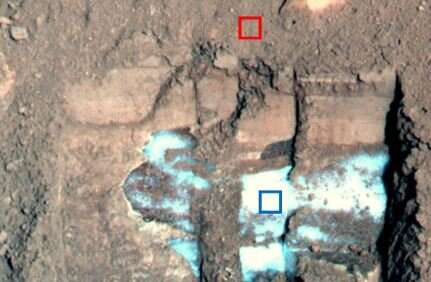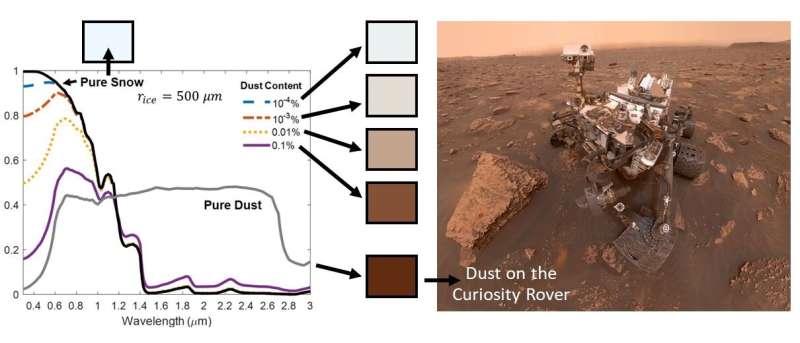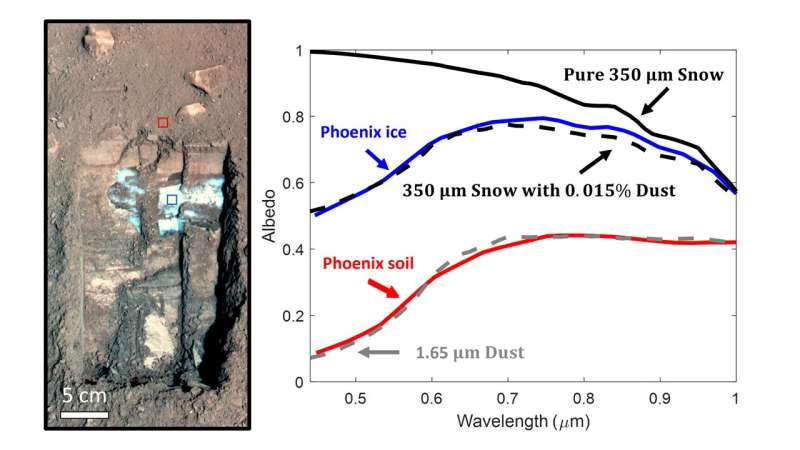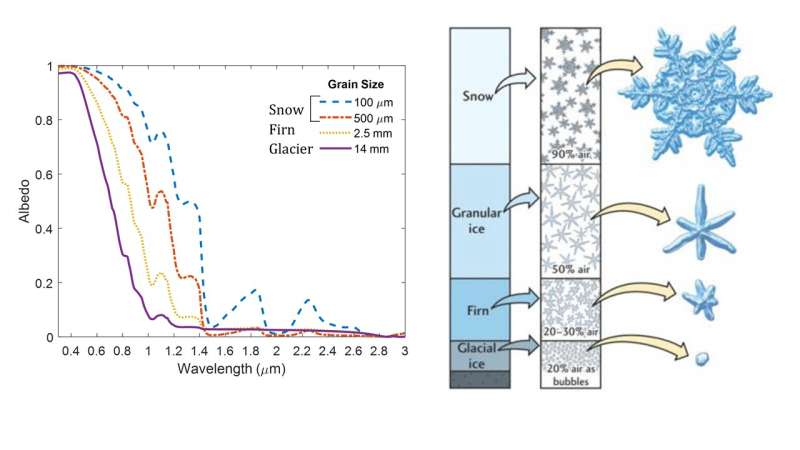Martian snow is dusty, could potentially melt, new study shows

Over the last two decades, scientists have found ice in many locations on Mars. Most Martian ice has been observed from orbital satellites like NASA's Mars Reconnaissance Orbiter. But determining the grain size and dust content of the ice from that far above the surface is challenging. And those aspects of the ice are crucial in helping scientists determine how old the ice is and how it was deposited.
So planetary scientists Aditya Khuller and Philip Christensen of Arizona State University, with Stephen Warren, an Earth ice and snow expert from the University of Washington, developed a new approach to determine how dusty Mars ice really is.
By combining data from NASA's Phoenix Mars Lander and Mars Reconnaissance Orbiter with computer simulations used to predict snow and glacier ice brightness on Earth, they were able to successfully match the brightness of Martian ice and determine its dust content. Their results have been recently published in AGU's Journal of Geophysical Research: Planets.
Mars is a dusty planet, so much of its ice is also dusty and much darker than fresh snow we might see on Earth. The dustier the ice is, the darker and thus warmer the ice gets, which can affect both its stability and evolution through time. Under certain conditions, this might also mean that the ice could melt on Mars.

"There is a chance that this dusty and dark ice might melt a few centimeters down," Khuller said. "And any subsurface liquid water produced from melting will be protected from evaporating in Mars' wispy atmosphere by the overlying blanket of ice."
Based on their simulations, they predict that the ice dug up by the Phoenix Mars Lander formed by dusty snowfall, sometime over the last million years, similar to other ice deposits found previously across the mid-latitudes of Mars.

"It is widely believed that Mars has experienced multiple ice ages throughout its history, and it looks like the ice being exposed throughout the mid-latitudes of Mars is a remnant of this ancient dusty snowfall," Khuller said.
For next steps, the team hopes to further analyze ice exposures on Mars, assess if the ice could actually melt, and learn more about Mars' climate history.

"We are working on developing improved computer simulations of Martian ice to study how it evolves over time, and whether it might melt to form liquid water," Khuller said. "The results from this study will be integral to our work because knowing how dark the ice is directly influences how warm it gets."
More information: Aditya R. Khuller et al, Spectral Albedo of Dusty Martian H 2 O Snow and Ice, Journal of Geophysical Research: Planets (2021). DOI: 10.1029/2021JE006910
Journal information: Journal of Geophysical Research: Planets
Provided by Arizona State University





















